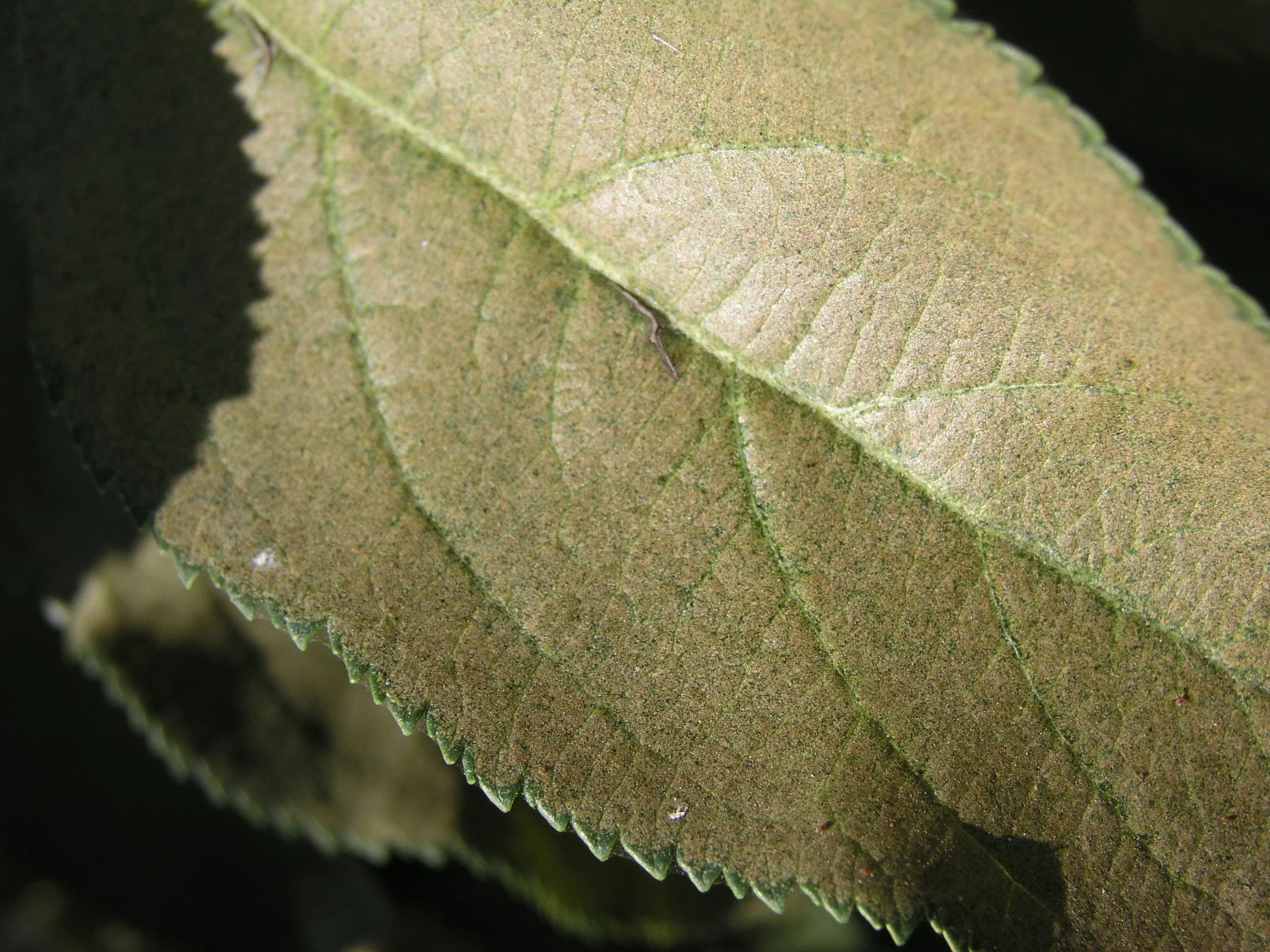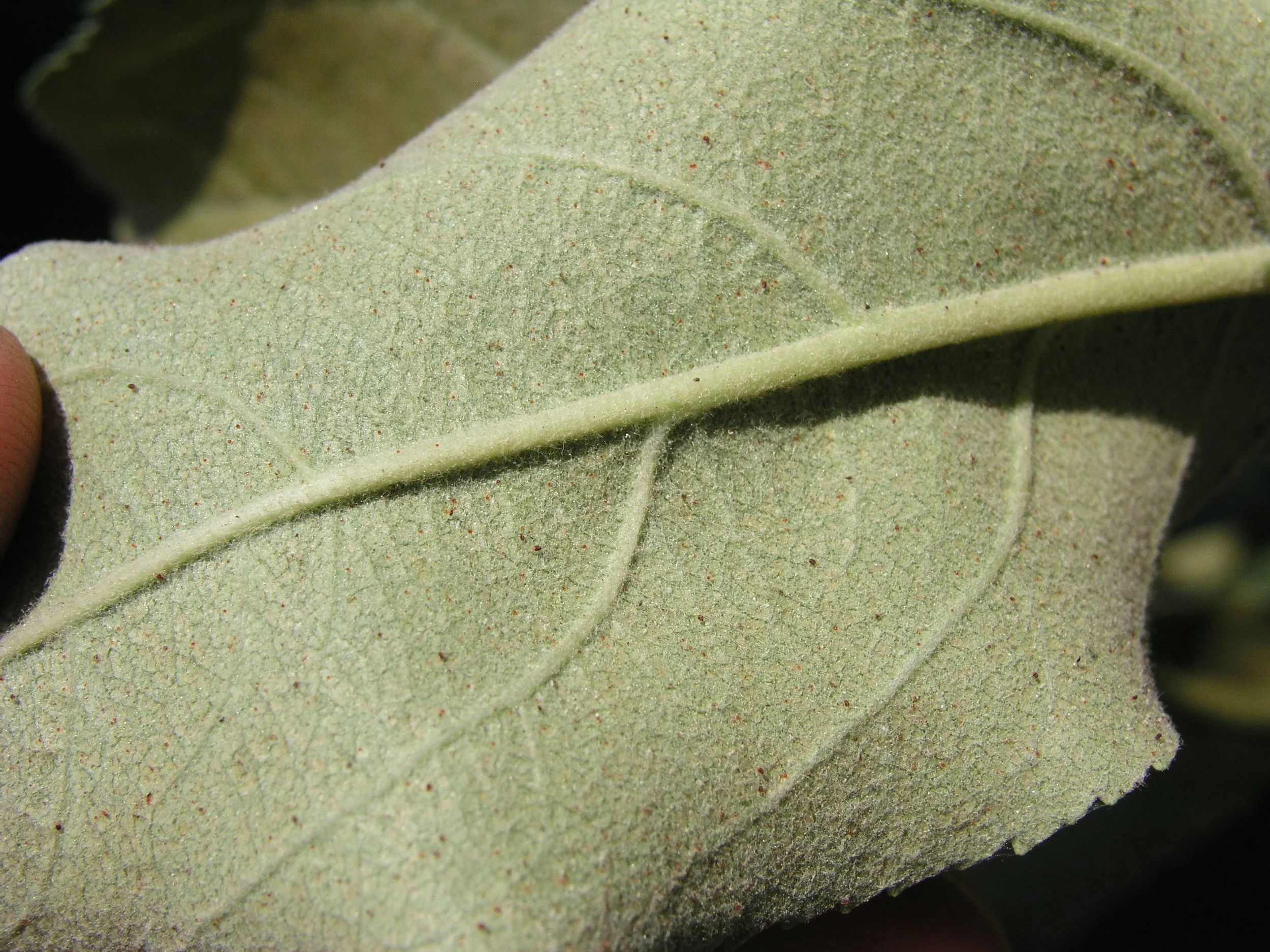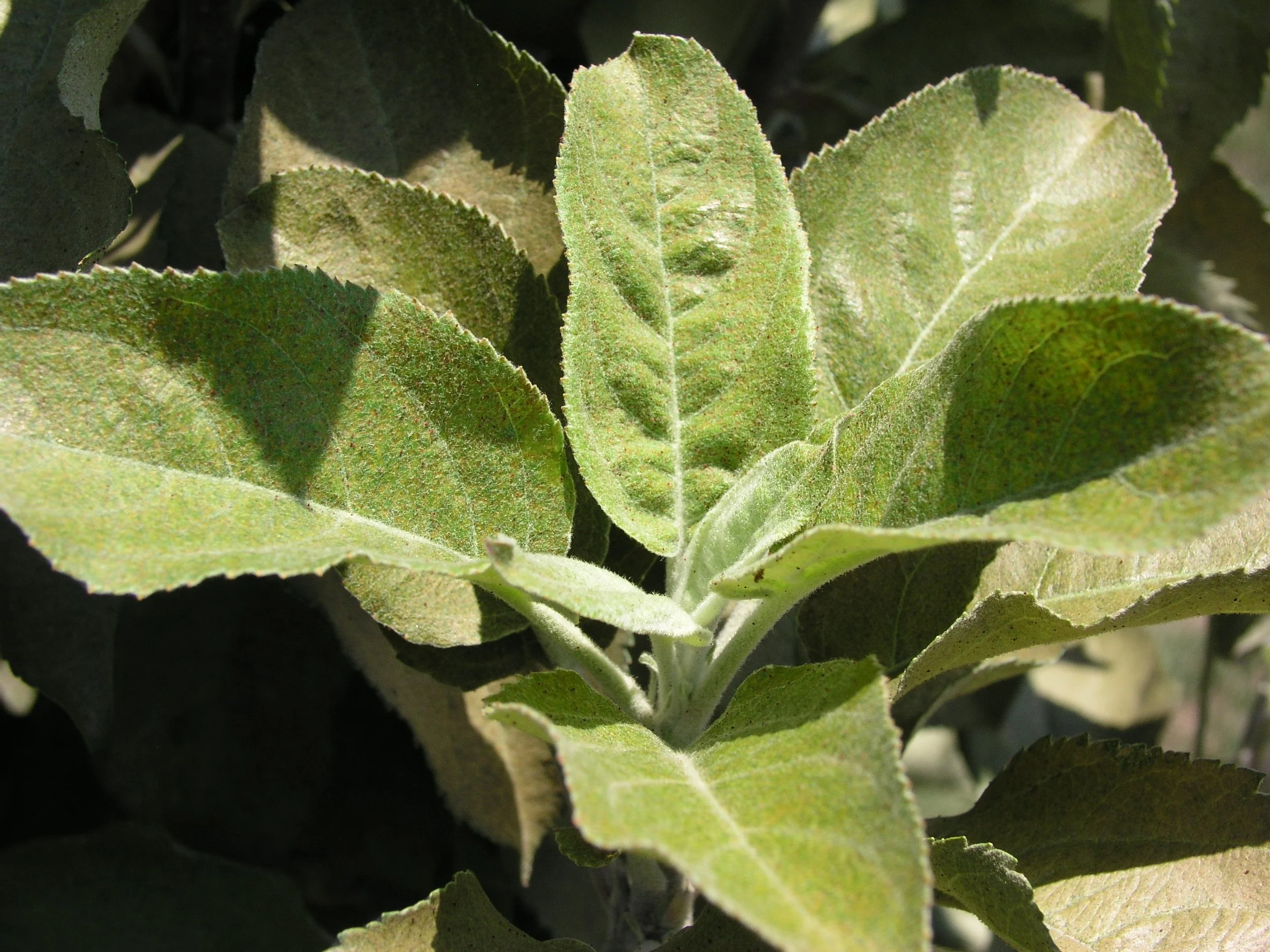For region-specific information, please contact your local Giving Grove partner. If you would like more information like this sent straight to your inbox, consider subscribing to The Serving, The Giving Grove’s quarterly newsletter.
Appearance:
Mites are very tiny in size (about 1/50th of an inch long); you will need a 10x hand lens to get a good look at mites. Alternatively, tap the underside of leaves on a white piece of paper, and rub your finger over the paper. Red to orange streaks indicate the presence of mites.
Two spotted mites:
Overwinter as orange adults without spots, and turn from orange to green once feeding begins.
Summer adults have two red eyes and two distinct dark spots on the back behind the eyes.
European red mites:
overwinter as eggs.
Adult females are bright red, while males are green to yellowish brown.
After hatching, the mites build colonies on the undersides of leaves and produce webbing over infested leave surfaces. This webbing gives them the name "spider" mites.
Damage:
Infestations are particularly common during hot, dry summer weather. Drought stress looks very similar to mite injury; always take a look under the leaves with your 10x hand lens.
The mites piercing-sucking mouthparts to feed on the sap on the underside of leaves and needles.
Leaf damage including white speckling (bleached look) or stippling on leaves and bronze or brown leaves that dry up and drop prematurely
Russeting on the surface of fruits
Scarring and shriveling of tart cherries from webbing and feeding
Appearance of fine webbing on leaves and twigs
Reduced tree vigor and fruit color, size, and production
Severely infested plants can be damaged and can even cause plants to die.
Management and Treatment:
Apply a thorough spray of organic horticultural dormant oil spray in late winter before bud break; dormant oil is most effective when the temperature does not drop below freezing for 24 hours after the spray application.
Check foliage for mite presence beginning in early summer.
Monitor foliage touching ground cover on lower limbs, and preferably – prune lowest branches to eliminate a branch from touching the ground with a full load of fruit.
Minimize weed growth, particularly broadleaf weeds, in the orchard.
Mow frequently to keep groundcover short, but avoid mowing during hot/dry spells.
Explore predatory mites as a biological control
Sources: University of Minnesota Extension and Utah State University Extension, UMassAmherst Center for Ag., Food, and Environment, Patrick L. Byers, Horticulture Specialist, and Michael Phillips, “The Holistic Orchard."




